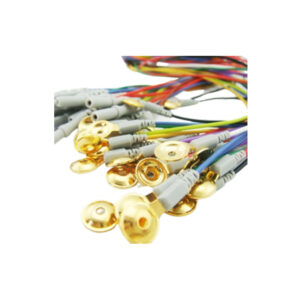EMG-NCS
Exploring EMG-NCS: Unraveling the Complexity of Neuromuscular Disorders
Understanding EMG-NCS
What is EMG?
Delve into the realm of electromyography (EMG), a diagnostic technique used to assess the electrical activity of muscles. Understand how EMG helps in identifying muscle disorders, nerve injuries, and neuromuscular diseases.
What are Nerve Conduction Studies (NCS)?
Explore the principles of nerve conduction studies (NCS), a diagnostic method used to evaluate the function of peripheral nerves. Learn how NCS measures the speed and strength of nerve signals, aiding in the diagnosis of nerve-related conditions.
The Role of EMG-NCS in Diagnosis
Comprehensive Muscle Assessment
Discover how EMG provides a comprehensive evaluation of muscle function and integrity. From detecting muscle weakness to assessing muscle disorders, EMG offers valuable insights into neuromuscular health.
Nerve Function Evaluation
Explore how NCS assesses the functionality of peripheral nerves by measuring nerve conduction velocity and amplitude. Understand how NCS aids in diagnosing conditions such as peripheral neuropathy, carpal tunnel syndrome, and radiculopathy.
Advantages of EMG-NCS
Precise Localization
Learn how EMG helps in precisely localizing muscle and nerve abnormalities, facilitating accurate diagnosis and targeted treatment interventions.
Comprehensive Evaluation
Discover the synergy between EMG and NCS, which together offer a comprehensive evaluation of neuromuscular function. By combining these techniques, clinicians can obtain a thorough understanding of nerve and muscle health.
Clinical Applications of EMG-NCS
Diagnosis of Neuromuscular Disorders
Explore how EMG and NCS aid in diagnosing a wide range of neuromuscular disorders, including peripheral neuropathies, myopathies, motor neuron diseases, and radiculopathies.
Treatment Planning
Learn how EMG and NCS results inform treatment planning and management decisions for patients with neuromuscular conditions. From guiding medication selection to determining the need for surgical interventions, EMG and NCS play a crucial role in patient care.
Limitations and Considerations
Technical Challenges
Understand the technical challenges associated with EMG and NCS, including electrode placement, patient cooperation, and interpretation of results.
Interpretation Variability
Explore the potential for interpretation variability in EMG and NCS results, highlighting the importance of clinician expertise and experience in accurate diagnosis and treatment planning.
FAQs about EMG-NCS
- What is the difference between EMG and NCS? EMG (Electromyography) assesses the electrical activity of muscles, while NCS (Nerve Conduction Studies) evaluate the function of peripheral nerves by measuring nerve conduction velocity and amplitude.
- What conditions can EMG and NCS diagnose? EMG and NCS can diagnose a variety of nerve and muscle disorders, including peripheral neuropathies, myopathies, motor neuron diseases, radiculopathies, and carpal tunnel syndrome.
- Are EMG and NCS painful? While EMG and NCS involve some discomfort, they are generally well-tolerated by patients. Discomfort during EMG may arise from needle insertion into muscles, while NCS may cause mild discomfort from electrical stimulation of nerves.
- How long does an EMG and NCS procedure take? The duration of an EMG and NCS procedure varies depending on the number of muscles and nerves being evaluated. Typically, each test takes 20-60 minutes to complete.
- Are EMG and NCS safe? EMG and NCS are considered safe diagnostic procedures when performed by trained healthcare professionals. Risks are minimal and include minor bruising or discomfort at the site of needle insertion for EMG and transient discomfort from electrical stimulation for NCS.
Conclusion
In the realm of neuromuscular diagnostics, EMG and NCS stand as indispensable tools, offering clinicians invaluable insights into nerve and muscle function. By combining the strengths of electromyography and nerve conduction studies, clinicians can achieve a comprehensive understanding of neuromuscular health and diagnose a wide range of conditions with precision.
From identifying muscle disorders to evaluating peripheral nerve function, EMG and NCS play a pivotal role in diagnosis and treatment planning. Their ability to provide objective measurements, localize abnormalities, and guide therapeutic interventions makes them essential components of modern neurology and rehabilitation practices.
While EMG and NCS may present technical challenges and interpretation variability, their benefits far outweigh the limitations. With proper training and expertise, clinicians can harness the power of EMG and NCS to improve patient outcomes, enhance treatment efficacy, and optimize neuromuscular care.
As technology continues to advance, EMG and NCS will undoubtedly evolve, further refining our ability to diagnose and treat neuromuscular disorders. By embracing these diagnostic modalities and staying abreast of advancements, clinicians can continue to provide high-quality care and improve the lives of patients with nerve and muscle conditions.
Choose EMG and NCS for comprehensive nerve and muscle diagnostics, and embark on a journey of discovery, understanding, and healing in the field of neuromuscular medicine.





